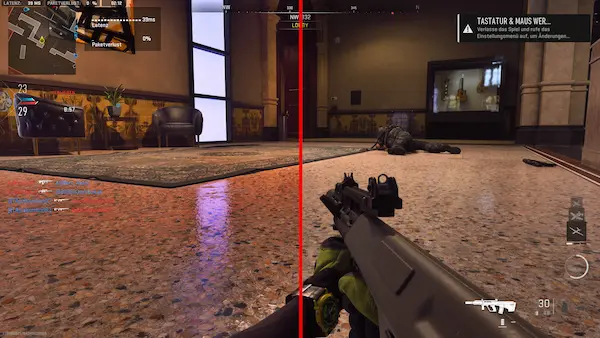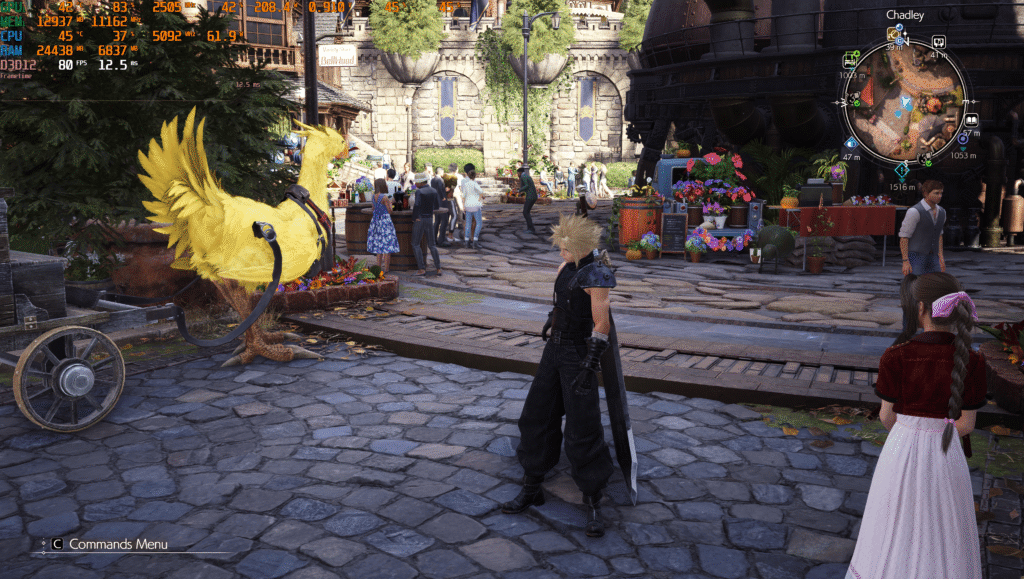ReShade has earned a reputation as one of the most powerful post-processing injectors available to gamers. It enables visual enhancement by adding effects like ambient occlusion, color correction, depth of field, and more. With the gaming industry’s growing adoption of advanced graphics APIs like Vulkan and DirectX 12, many users wonder: Can ReShade be used with Vulkan or DirectX 12 games? The short answer is yes—but the implementation, compatibility, and performance considerations are far more nuanced. Understanding these layers is key to effectively using ReShade with modern graphics pipelines.
Understanding ReShade’s Core Functionality
To fully grasp how ReShade interacts with APIs like Vulkan and DirectX 12, it’s crucial to understand what ReShade does at a technical level. ReShade is a post-processing injector, which means it intercepts frames as they are rendered by a game engine and then applies additional effects on top of the final output. It hooks into the graphics API used by the game, modifies the visual output, and then sends it to the display. Traditionally, this hooking method worked smoothly with older APIs like DirectX 9, DirectX 11, and OpenGL.
But Vulkan and DirectX 12 introduced an entirely new rendering paradigm. These modern APIs emphasize low-level access to the GPU, offering significantly improved efficiency and control for developers. However, this also means they are far less forgiving when it comes to external modifications like those used by ReShade. The deeper control that Vulkan and DirectX 12 provide developers also makes it more complex for tools like ReShade to hook into them reliably.
Compatibility Challenges with Vulkan and DirectX 12
The early days of Vulkan and DirectX 12 integration presented numerous challenges for ReShade developers. The architecture of these APIs significantly differed from older APIs in several ways. First, both Vulkan and DirectX 12 rely heavily on multi-threaded rendering and explicit memory management. This structure makes it much harder for third-party injectors to insert post-processing effects without causing conflicts or performance bottlenecks.
Additionally, Vulkan and DirectX 12 are designed with stability and debugging in mind, often with validation layers that flag any form of unexpected behavior—including shader injection. These validations can make the system either crash or prevent ReShade from initializing properly. In DirectX 11, ReShade could insert itself more easily because the API handled much of the GPU resource management behind the scenes. But with Vulkan and DX12, the burden is on the developer—and any third-party injector must work around these lower-level constructs carefully.
Progress in Vulkan and DirectX 12 Integration
Despite these challenges, the ReShade development community has made significant strides in recent years. Beginning with versions 4.5 and later, ReShade began to offer experimental support for Vulkan. Eventually, more stable versions were released that allowed Vulkan games to use ReShade with increasing reliability. Similarly, support for DirectX 12 also matured over time, although it remains more complex due to the way DX12 distributes rendering tasks across multiple threads.
The process of enabling ReShade in Vulkan and DirectX 12 games often differs from older APIs. Instead of automatic injection through the game executable, users frequently have to launch the game with special arguments or through dedicated ReShade launchers. Vulkan, in particular, requires setting environment variables or using ReShade’s installer to place its Vulkan layer files in the proper directory.
It’s important to note that although ReShade can be used with these APIs, success may vary based on the game’s implementation. Some developers use customized versions of Vulkan or DirectX 12 that may not be compatible with ReShade out of the box. Moreover, certain anti-cheat mechanisms may block ReShade when used with Vulkan or DirectX 12 games, even if the intent is purely visual enhancement.
Game-Specific Behavior and ReShade Performance
One of the key factors affecting ReShade’s behavior under Vulkan or DirectX 12 is how a game uses its rendering pipeline. In some cases, ReShade may hook properly, but the game might present its final frame in a way that bypasses the layer ReShade hooks into. For instance, a game might render using Vulkan but use a final post-process pass handled differently—causing ReShade’s effects to be omitted or improperly displayed.
Performance is another critical aspect. Using ReShade with Vulkan or DirectX 12 can, in some instances, introduce a slight performance penalty. This is especially true when using complex shaders or effects like ray tracing, ambient occlusion, or high-quality depth of field. However, since both Vulkan and DX12 are more efficient APIs to begin with, the overall performance degradation may still be lower than if the same shaders were applied on DirectX 11 or OpenGL.
On high-end systems, users often report negligible performance drops. However, those using mid-tier or older GPUs might experience noticeable frame rate dips, especially in GPU-intensive titles. It’s also worth noting that performance can vary depending on whether the ReShade preset uses depth buffer access, as Vulkan and DX12 manage depth information differently than older APIs.
Depth Buffer Access Limitations
A significant feature of ReShade is its ability to manipulate depth information to apply effects like depth of field, ambient occlusion, and 3D stereoscopic enhancements. Under DirectX 11 and OpenGL, depth buffer access was more straightforward. But with Vulkan and DirectX 12, the story becomes more complex.
Both APIs manage the depth buffer in ways that can be opaque to ReShade. Games may use multiple depth passes or handle their depth information across different threads, making it difficult for ReShade to consistently access the correct buffer. In addition, Vulkan and DirectX 12 often use reverse Z-depth buffers for improved precision, which can cause shaders relying on traditional depth values to behave incorrectly.
While ReShade has implemented workarounds and detection mechanisms for many of these variations, they aren’t foolproof. Some games allow correct depth buffer access only in specific scenes, menus, or after disabling certain post-processing features. This unpredictability means that depth-based shaders may require fine-tuning per game when used with Vulkan or DirectX 12.
Installation Process for Vulkan and DirectX 12 Titles
Installing ReShade for a Vulkan or DirectX 12 game is not identical to older APIs. When installing for a Vulkan game, ReShade adds a Vulkan layer to the system which allows it to intercept draw calls and apply post-processing. The user typically selects the game’s executable and ensures Vulkan is chosen during installation. For DirectX 12, the user must often manually select the dxgi.dll version, or configure launch options in the game’s shortcut or platform launcher (e.g., Steam).
Some games also provide built-in support or partial integration with ReShade effects. A few game engines have even begun incorporating native support for post-processing frameworks that mimic or leverage ReShade’s capabilities. This trend points to a future where game developers may more openly support advanced graphical customizations, potentially easing ReShade’s integration challenges.
Even so, users should expect to troubleshoot on a case-by-case basis. Some titles may require disabling in-game anti-aliasing, motion blur, or other post-processing features to ensure ReShade effects are visible and properly layered. Additionally, launching the game in borderless windowed mode can sometimes improve ReShade’s performance or reliability.
Anti-Cheat and Multiplayer Considerations
One of the more controversial topics surrounding ReShade is its interaction with anti-cheat systems in multiplayer games. While ReShade itself is not a cheat and is primarily used for aesthetic improvements, its method of injecting code into the game engine can trigger red flags with anti-cheat software. This is particularly relevant in games using Vulkan or DirectX 12, where security mechanisms may be more stringent.
In multiplayer environments, games often prevent any form of third-party code injection, regardless of intent. As such, many online games—especially competitive ones—either block ReShade entirely or ban users found using it. The risk is even higher when using effects that access the depth buffer, as these could theoretically provide unfair advantages through wall hacks or enhanced visibility.
Developers of ReShade have attempted to mitigate this by disabling depth buffer access by default in multiplayer games. However, detection methods used by anti-cheat software are not always transparent. The bottom line is that users must exercise caution when using ReShade with any online game, especially one running Vulkan or DirectX 12. For single-player titles, however, ReShade generally functions without issue.
The Future of ReShade and Modern APIs
ReShade’s journey toward supporting Vulkan and DirectX 12 games represents a broader trend in the modding and PC graphics community. As developers continue to adopt these modern APIs, tools like ReShade must evolve to keep up. The progress so far is impressive, considering the architectural hurdles that Vulkan and DirectX 12 present. But the road ahead is still filled with challenges—especially as more games incorporate custom rendering pipelines and obfuscation techniques.
Yet, ReShade’s open-source development model and active community are key assets in this evolution. Developers continue to refine shader compatibility, improve performance, and expand integration capabilities. The hope is that future versions of ReShade will offer seamless support for Vulkan and DirectX 12 without requiring elaborate setup procedures or game-specific adjustments.
There’s also growing demand for game developers to embrace post-processing injectors more openly. Rather than treating them as threats, developers could offer toggles for community shaders or built-in ReShade-style filters. This would allow users to enjoy the visual benefits of post-processing without compromising security or stability.
Conclusion
To answer the core question—can ReShade be used with Vulkan or DirectX 12 games?—the answer is unequivocally yes. However, the experience is not as simple or uniform as it might be with older graphics APIs. Vulkan and DX12 present technical and compatibility challenges that require users to invest more effort during setup and troubleshooting.



